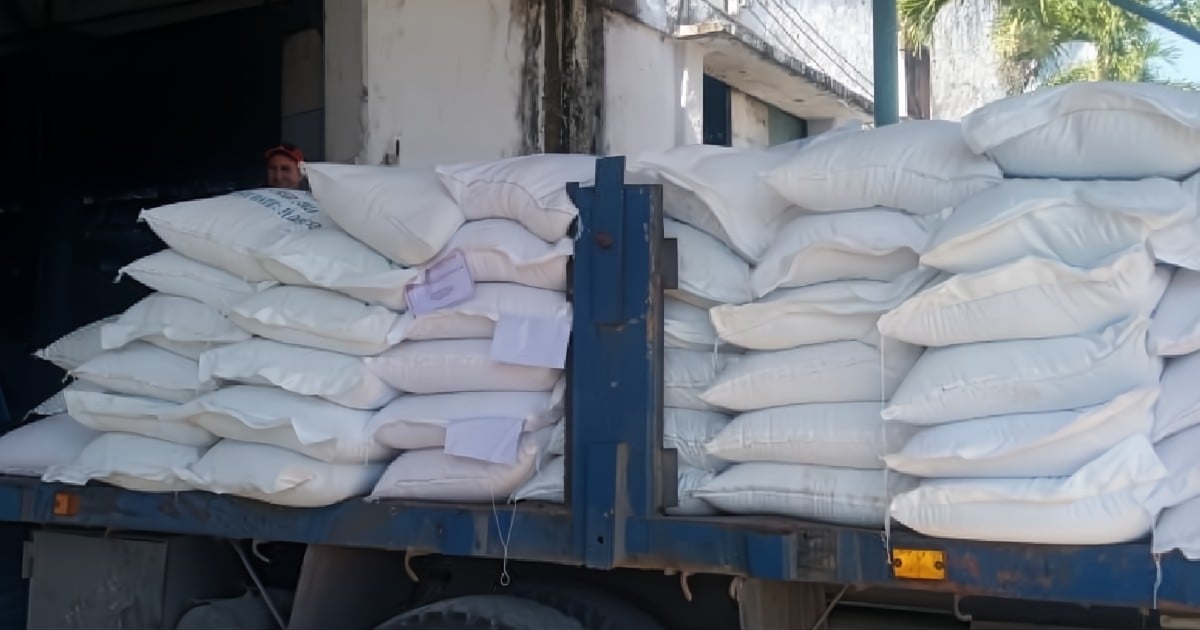The distribution of rice remains a contentious issue in Cuba. The government has promised to deliver the 17 pounds of rice that have been pending since December in the province of Villa Clara, countering rumors that the process was halted due to a fuel shortage. This announcement was made by the state-run radio station CMHW, citing officials from the provincial Commerce department.
According to these authorities, all municipalities have already received part of the basic basket rice in their warehouses, and distribution is underway, albeit with delays. The allocations are for the months of December, January, and February, and so far, only 10 pounds have been distributed in most areas, except in Sagua la Grande and Corralillo, where distribution began on Monday in some retail units.
The officials emphasized that the transport of rice from the port of Cienfuegos has not been interrupted and that, since March 5, over 1,398 tons have been received in Villa Clara's wholesale warehouses. They claimed that just this past Sunday, 314 tons were transported.
Despite these statements, the public continues to grapple with a severe food crisis and difficulties in accessing basic goods. Authorities attribute the delays to logistical problems and prolonged power outages, while citizens report ongoing shortages impacting Cuban families. Amidst the crisis, the government has announced that two of the 17 pounds of rice per consumer will be free, as they are donations from allied countries. However, for many Cubans, the late arrival of these staples does little to ease their daily hardships.
The Ongoing Rice Shortage
The scarcity of rice in Cuba is not a new development. In recent years, domestic production has suffered a significant decline, increasing reliance on imports and international donations. For instance, in 2024, only 30 percent of what was harvested in 2018 was achieved, according to a report from the official newspaper Granma, exacerbating the island's food crisis.
To address this situation, countries like China and Vietnam have made substantial rice donations. In April 2024, China sent a donation of 408 tons. Similarly, in March 2023, Vietnam donated 5,000 tons. Despite these efforts, the internal distribution of the sought-after grain has faced numerous challenges. In February 2025, residents in Matanzas received just two pounds of rice with a two-month delay, highlighting the supply system's difficulties.
Moreover, the quality of the distributed rice has been a source of complaints; in December 2024, citizens reported that the rice from the local stores arrived late, dirty, and infested with weevils.
Informal Market Struggles
The food crisis in Cuba has sent rice prices soaring in the informal market. By late February, the price of a pound of rice hit 300 Cuban pesos (CUP), underscoring the severe scarcity and the erosion of the population's purchasing power. According to reports from citizens in various provinces, obtaining rice through the ration book has become nearly impossible, forcing families to turn to the informal market, where prices have reached exorbitant levels.
Recently, the Ministry of Finance and Prices (MFP) announced a temporary regulation of maximum prices for the collection and retail of domestically produced rice and common beans (black, red, and white). The measure was established through Agreement 10093, approved on March 5, 2025, and published in the Official Gazette No. 7 (extraordinary) on March 7.
Under the new regulation, the maximum retail price for controlled and free sales per pound will be 155 pesos for rice. As for the collection price per ton, it will be 239,000 pesos (consumption rice). The government justifies this decision as part of its efforts to curb inflation, which has worsened in recent years due to the economic crisis, food shortages, and rising prices in the black market.
Key Questions on Cuba's Rice Crisis
What are the main reasons for Cuba's rice shortage?
The primary reasons for Cuba's rice shortage include a significant decline in domestic production, increased reliance on imports and international donations, and logistical issues exacerbated by power outages.
How has the Cuban government responded to the rice crisis?
The government has announced the distribution of 17 pounds of rice in Villa Clara, with two pounds being free due to foreign donations. Additionally, they have regulated the maximum prices for rice and common beans to combat inflation.
How have international donations impacted Cuba's rice supply?
International donations from countries like China and Vietnam have been crucial in supplementing Cuba's rice supply, providing thousands of tons of rice to help alleviate some of the pressure from domestic shortages.
What challenges does the Cuban population face in accessing rice?
Cubans face challenges such as significant delays in the distribution of rice through official channels, poor quality of the rice provided, and high prices in the informal market, making access difficult for many families.
